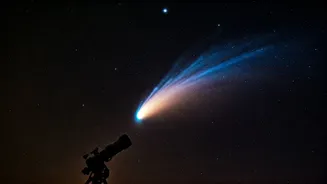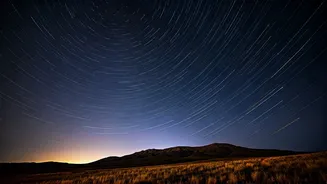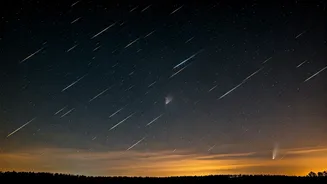Comet SWAN: Overview
Comet C/2020 F8 (SWAN), often referred to as Comet SWAN, became brighter and caught the attention of astronomy enthusiasts. The comet became visible in
the night sky, creating excitement among stargazers. The comet's trajectory brought it closer to Earth, enhancing its visibility. The name "SWAN" is derived from the Solar Wind Anisotropies instrument on the Solar and Heliospheric Observatory (SOHO), which first detected the comet. It's an icy body that emits a characteristic glow as it nears the sun. This glow is due to the sublimation of ice, which forms a coma and tail, making the comet visible from Earth.
Viewing Time & Location
To observe Comet SWAN successfully, timing and location were key. During its closest approach, the comet was visible in the Northern Hemisphere. It was best seen in the pre-dawn hours. The ideal viewing time was before sunrise, in a location away from city lights, to reduce light pollution. It was important to select a spot with a clear horizon, as this maximized the chances of seeing the comet. To get the best view, it was suggested to use binoculars to enhance the visibility of the comet. Checking weather forecasts to find clear skies helped ensure a successful observation.
What to Look For
When observing Comet SWAN, several visual aspects became apparent. A comet typically has a coma, the cloud of gas and dust surrounding its nucleus, and a tail that streams away from the sun due to solar wind pressure. The brightness of the comet was variable, as it depended on its activity. Observers should look for a fuzzy patch of light in the sky; the tail, if visible, would extend in the opposite direction from the sun. Binoculars significantly enhanced the visibility, allowing observers to appreciate details such as the coma and potentially, the tail's structure. Persistence and patience were important, as comets are often faint, and the viewing conditions might need adjustment.
Essential Viewing Tools
While Comet SWAN could be spotted with the naked eye, certain tools were beneficial. Binoculars were highly recommended, as they enhanced the visibility of the comet's coma and tail, especially given the comet's brightness. A basic pair of binoculars would have been enough to enjoy a great view. A telescope provided even greater magnification and allowed for observation of the comet's finer details. Additional tools included a star chart or a sky-mapping app to help locate the comet among other celestial objects. Ensuring clear skies and minimal light pollution was also vital, making a dark location outside of a city ideal for viewing. Preparations included dressing warmly and bringing a chair to ensure a comfortable viewing experience.
Tips for Successful Viewing
Several tips helped ensure successful viewing of Comet SWAN. Before heading out, it was crucial to check the weather forecast to confirm clear skies. Finding a location away from city lights significantly improved visibility. Patience was key, as comets can sometimes be faint, and their appearance might vary. It was recommended to let your eyes adjust to the darkness for at least 20 minutes before observing, which heightened sensitivity. Using a red flashlight helped preserve night vision while consulting star charts or sky-mapping apps aided in locating the comet. Sharing the experience with others, such as family and friends, added to the enjoyment of the observation.














